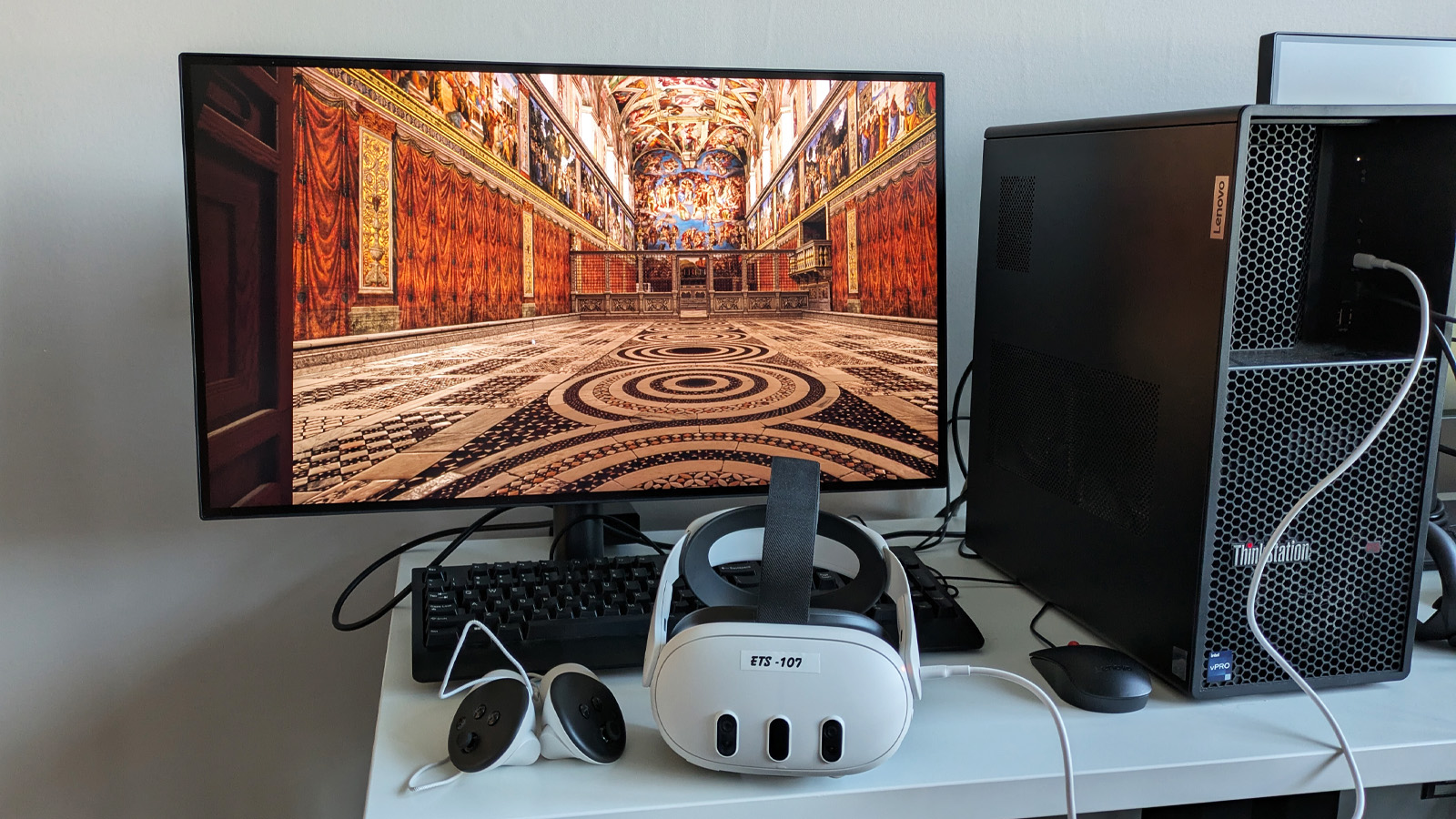Objective
- Enable students to work hands-on with emerging tools and explore technology trends in a way that benefits their curricular activities, professional interests, creative expression, and education.
Strategies
Facilitating experiential learning through emerging technologies for students is a top priority for the Emerging Technology Studio (ETS). The ETS primarily supports academic work in the arts and humanities. Our approach to curricular embedment emphasizes transdisciplinary collaboration, innovation, creative problem-solving, and providing educational value to all students.
We work directly with department coordinators and individual faculty to plan for resource availability and their inclusion in the classroom depending on curricular needs each semester. Examples of these curricular-oriented efforts include, but are not limited to: providing ETS spaces for classroom activities and accommodating field trips that expose students to current emerging technology trends to explore how they relate to various topics in the arts and humanities. The ETS offers students the resources to explore these topics and work with emerging tools hands-on. This includes providing demos of different technical capabilities, as well as offering students an option to check out different equipment for use in class projects.
A big part of our curricular embedment strategy also entails collaborations on research projects led by faculty, in which case ETS can provide technical guidance and content development assistance for the project. To inquire about scheduling a class demo, field trip, curricular activity that involves reserving ETS spaces or equipment for large groups, please contact ets@osu.edu with a subject line "Curricular Embedment Proposal", or "Research Proposal" for potential research project collaborations.
Curricular Integration Examples
In Spring 2024 , the Emerging Technology Studio (ETS) hosted Tomas Dorta, inventor of Hyve3D, a collaborative tool for immersive co-design that blends the physical and the virtual environment. Dorta gave a presentation to undergraduate students in the Department of Design. Students had the chance to learn about the emerging technologies at the intersection of co-design and immersive visualization, which is very relevant to their current projects and future work in their careers. This experience provided the students with a chance to explore the process of working in 3D together and designing in a virtual realm without having to wear a VR headset.
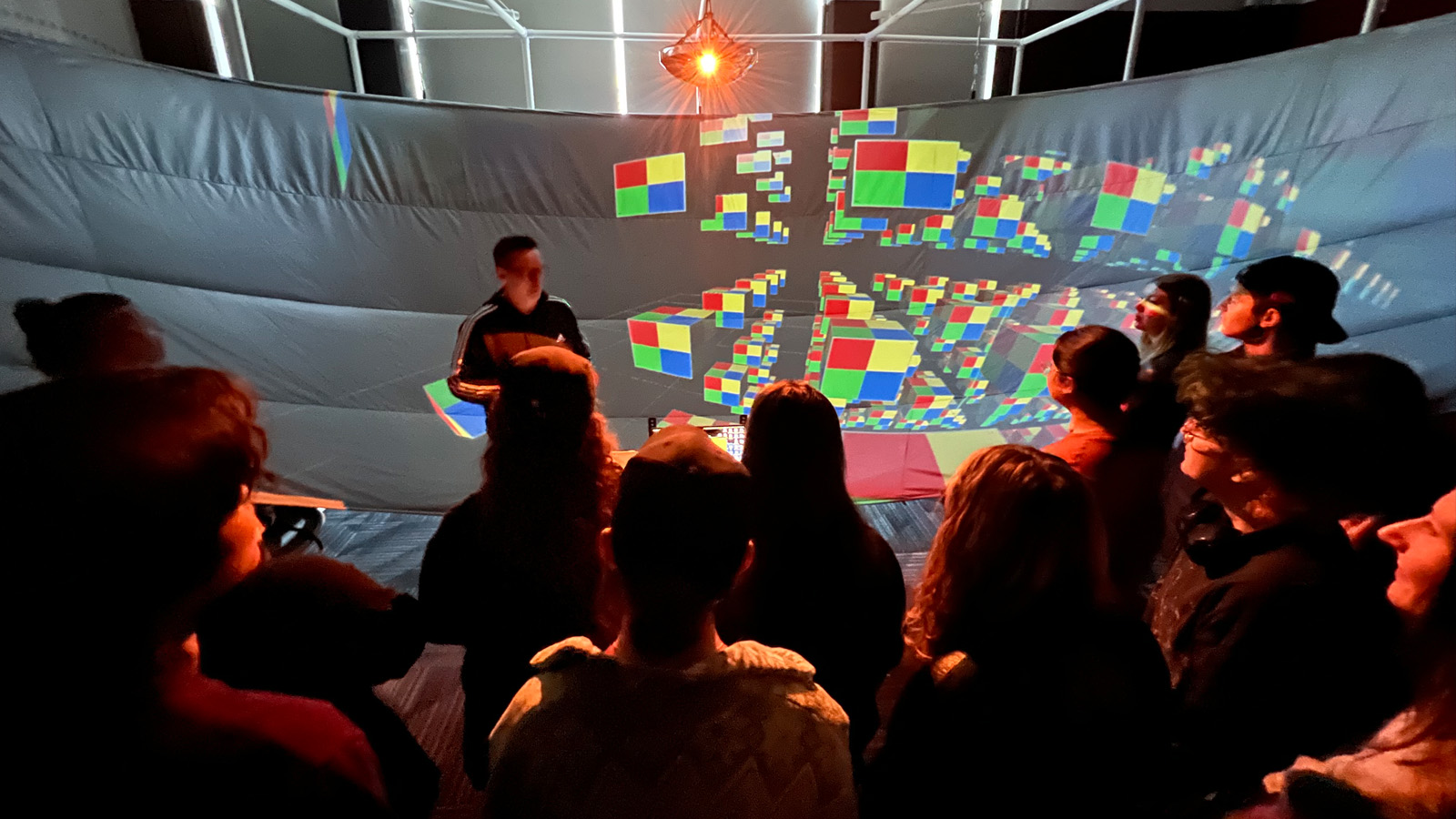
To conclude the final week of the 2024 Spring semester, PhotoGraphic Design studio (Introduction to VCD II) course instructor Peter Chan orchestrated a dynamic workshop centered around collaborative exploration of the role of AI-generated content in visual communication design.. The session, held on April 19th, unfolded at the state-of-the-art Emerging Technology Studio (ETS) situated in 180 Hopkins Hall. Kicking off with an illuminating Adobe FireFly demonstration by ETS director Michael Hardesty, the workshop seamlessly transitioned into collaborative endeavors by sophomores from the Visual Communication Design program. Seven teams, each comprising three students and a guest, explored the innovative realm of AI-generated visual imagery. Guided by a series of visual narrative and composition design prompts, akin to those involved in their ongoing PhotoGraphic Project, “Journey Towards Wellbeing: Exploring the Emotional Landscape of Driving to Campus,” the students discovered the novel process with enthusiasm. This approach facilitated a creative integration of their existing project work into the exploration of AI-generated content.
This special event was made possible through the generous contributions of OSU ETS, Adobe Customer Solutions, and CampusParc.

In Spring 2024, Professor William Nickley partnered with the Emerging Technology Studio (ETS) to enable the students in Design Media II for Industrial Design class to explore collaborative visualization methods using mixed reality (MR), particularly virtual reality (VR). In their project "Chow Down", students were tasked with exploring an emerging media toolchain and collaborative VR workflows for conceptualizing a novel dinning experience.
In this collaboration, ETS provided students with Meta Quest 3 mixed reality headsets. The headsets were equipped with Gravity Sketch Collab, a 3D sculpting app which allows up to four students to collaborate simultaneously in realizing their shared vision in 3D. This project resulted in live demonstrations in which students explained their proposed meal experience and their design journeys using collaborative VR.
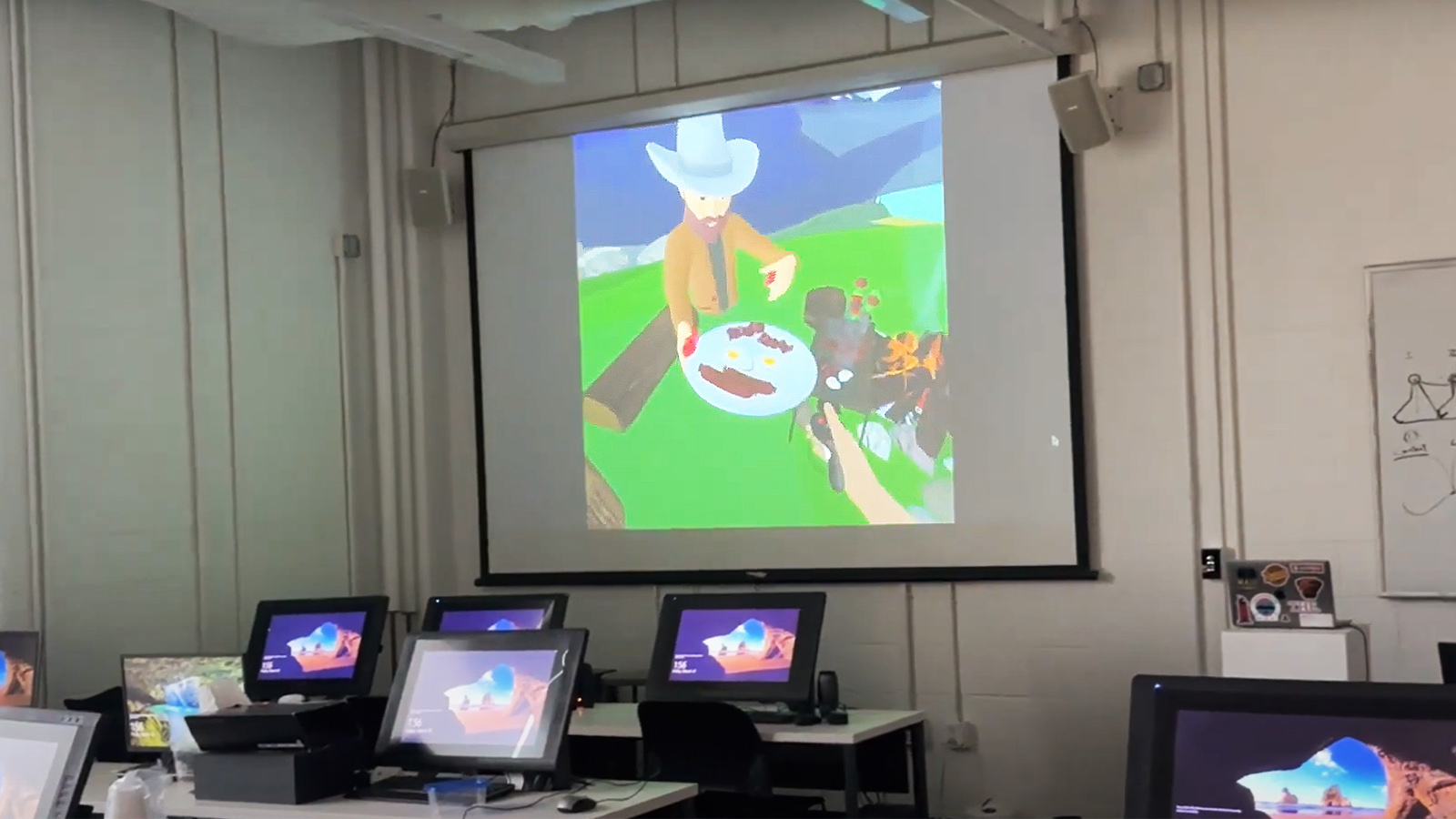
In Spring 2025, Graduate Teaching Associates Trevor Teafatiller and Bastian De Monte taught their classes in the ETS, exploring the application of immersive technology in language instruction. In this class period, German Language students had the opportunity to practice speaking German through an interactive activity using 360 videos and virtual reality. The students watched immersive 360 videos of cultural sites in Vienna, Austria through virtual reality headsets in the ETS. After this, the students worked together to complete a wayfinding activity on paper, drawing on what they experienced in VR to explain how to navigate some of the city sites in German.
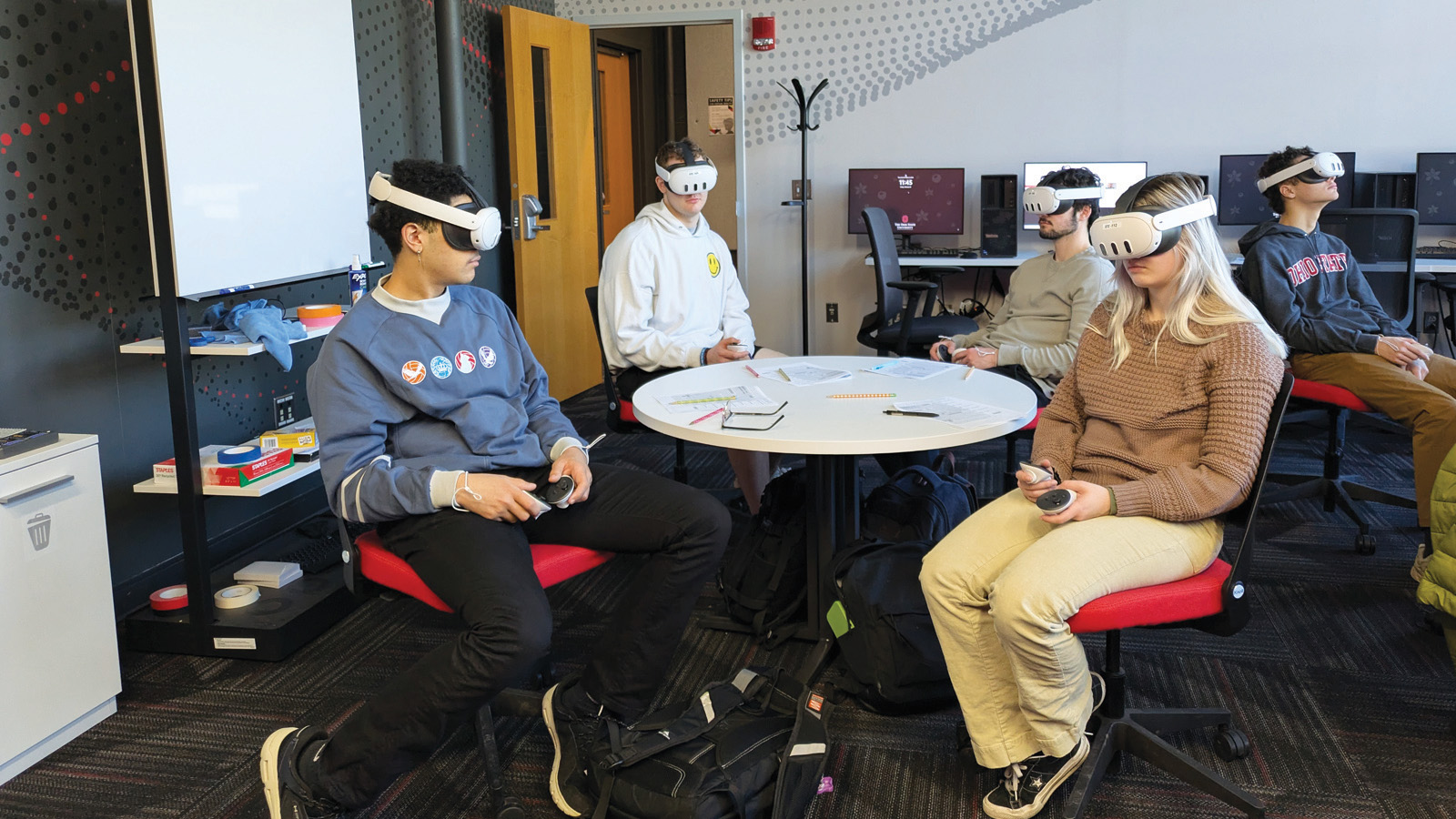
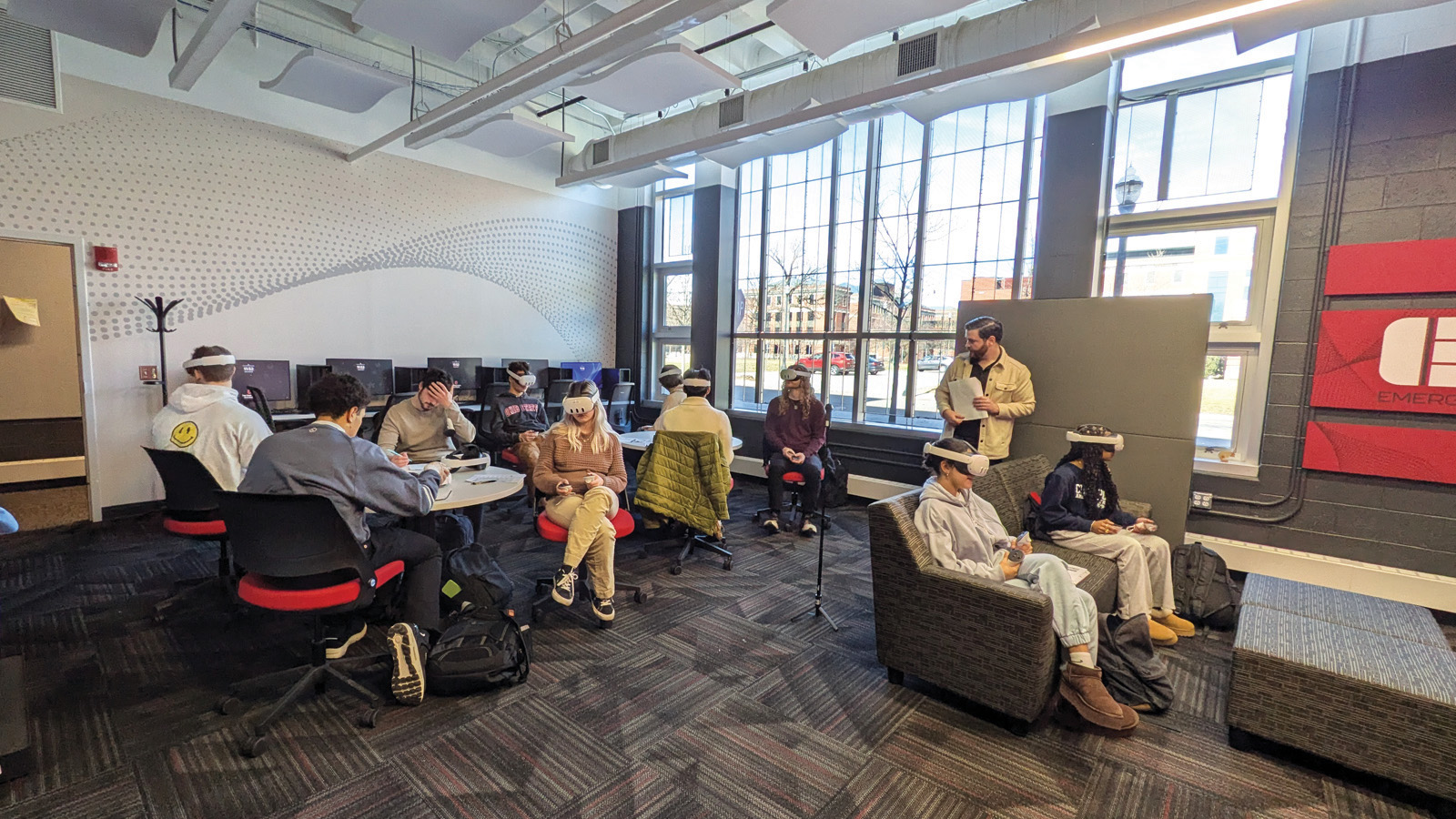
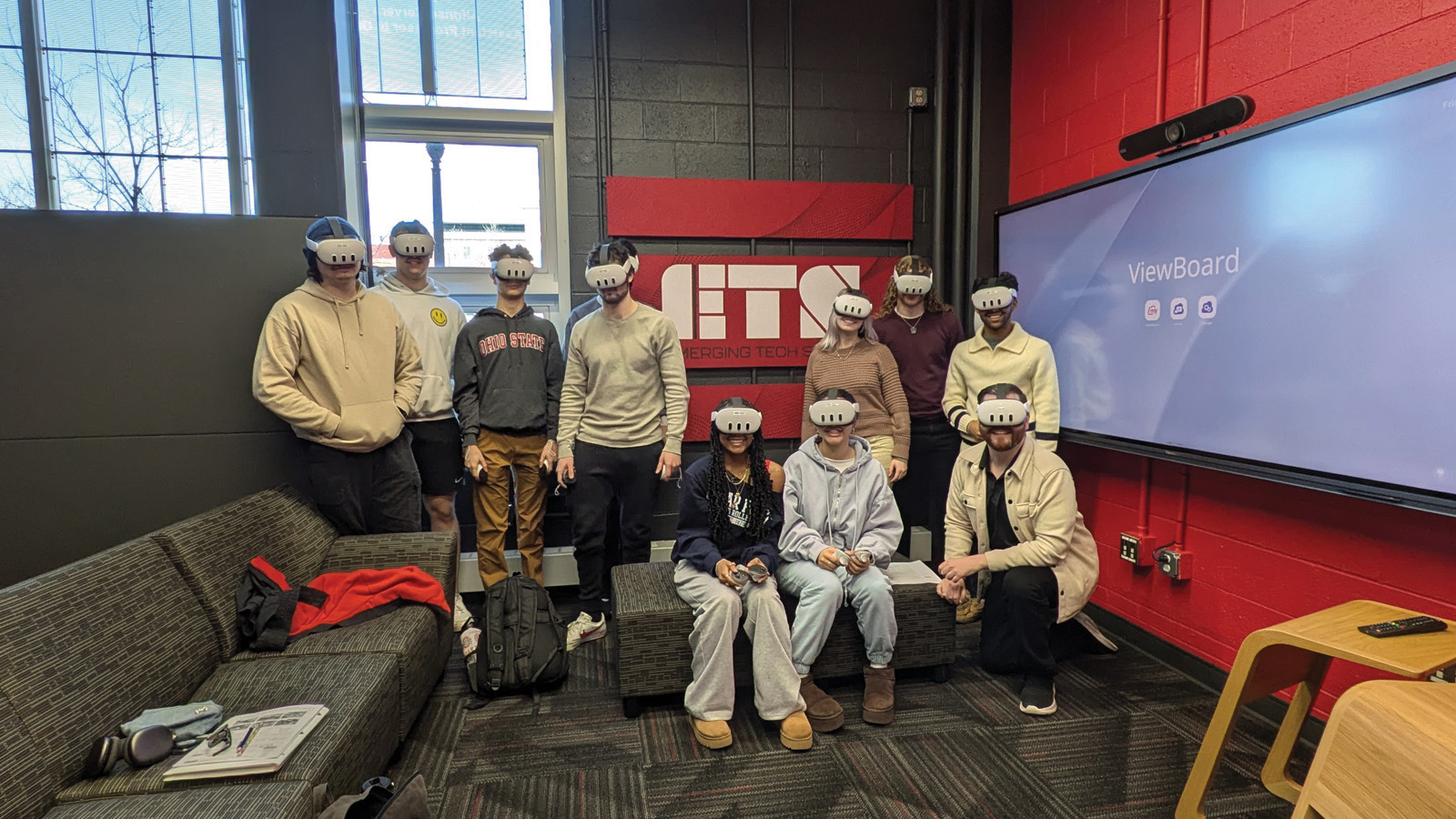
The ETS collaborates with the Art History faculty each semester to facilitate immersive experiences for students in Renaissance Art classes. The students visit the ETS throughout the semester, and they experience interactive VR simulations of the sites they are learning about in their syllabus at that time. These VR experiences include an interactive guided overview of the Sistine Chapel, as well as navigating 3D digital environments of the Magi Chapel, Camera Picta, Loggia of Psyche, and Sala dei Giganti.
